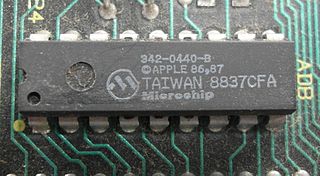A major contributor to this article appears to have a close connection with its subject.(October 2012) (Learn how and when to remove this template message) |
 | |
| Private | |
| Industry | Technology |
| Founded | 1987 Rocklin, California |
| Headquarters | 599 Menlo Drive, Suite 100 Rocklin, California |
Key people |
|
| Products | BASIC Stamp, Parallax SX, Parallax Propeller |
| Website | www |
Parallax Inc. is a privately held company in Rocklin, California. Parallax Inc. designs, manufactures, and sells BASIC Stamp microcontrollers, Propeller microcontrollers, microcontroller accessories (such as LCDs, sensors, RF modules, etc.), educational robot kits, and educational curriculum.

A privately held company, private company, or close corporation is a business company owned either by non-governmental organizations or by a relatively small number of shareholders or company members which does not offer or trade its company stock (shares) to the general public on the stock market exchanges, but rather the company's stock is offered, owned and traded or exchanged privately or over-the-counter. More ambiguous terms for a privately held company are closely held corporation, unquoted company, and unlisted company.

Rocklin is a city in Placer County, California located approximately 22 miles (35 km) from Sacramento, California, and about 6.1 miles (9.8 km) northeast of Roseville in the Sacramento metropolitan area. Besides Roseville, it shares borders with Granite Bay, Loomis and Lincoln. As of the 2010 census, Rocklin's population was 56,974.

The BASIC Stamp is a microcontroller with a small, specialized BASIC interpreter (PBASIC) built into ROM. It is made by Parallax, Inc. and has been popular with electronics hobbyists since the early 1990s.
Contents
- History
- Popular chips and robots
- The Propeller chip
- The BASIC Stamp and BASIC Stamp 2
- The Boe-Bot
- Sensors
- Education
- Stamps in Class
- Propeller education labs
- Featured in magazines
- Unofficial Propeller Expo
- History 2
- Unofficial Propeller Expo North East (UPENE)
- Unofficial Propeller Expo Chicago (UPEC)
- Unofficial Propeller Expo West (UPEW)
- The Parallax forum
- Products sold
- Microcontrollers
- Robots
- Other products
- Discontinued robots and products
- Upcoming products
- References
- External links
Parallax is headquartered in Rocklin. The Rocklin office employs thirty-five people in research and development, sales, manufacturing, education, marketing, and technical support. Parallax Inc. has over seventy distributors around the world, [1] including Radio Shack, Jameco Electronics, and Fry's Electronics. [2]
Jameco Electronics is an American electronic component and tool distributor. It was founded in 1974 by Dennis Farrey in Silicon Valley, San Francisco, California and is currently headquartered in Belmont, California, where it also operates a brick and mortar store.

Fry's Electronics is an American big-box store and retailer of software, consumer electronics, household appliances and computer hardware. Fry's has in-store computer repair and custom computer building services. The company has a chain of superstores headquartered in Silicon Valley. Starting with one store located in Sunnyvale, California, the chain posted sales of $2.4 billion and operated 34 stores in nine states by 2008.








